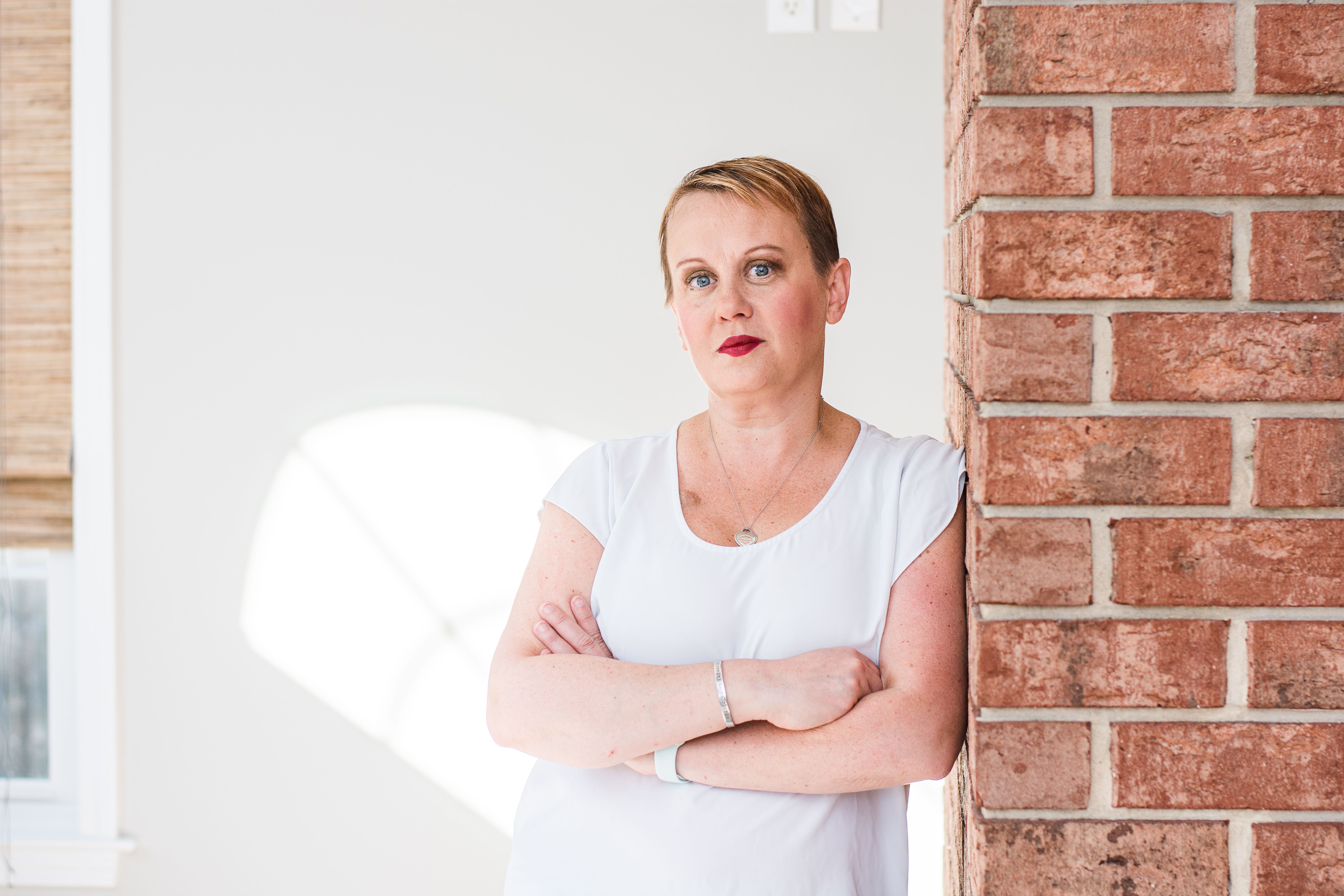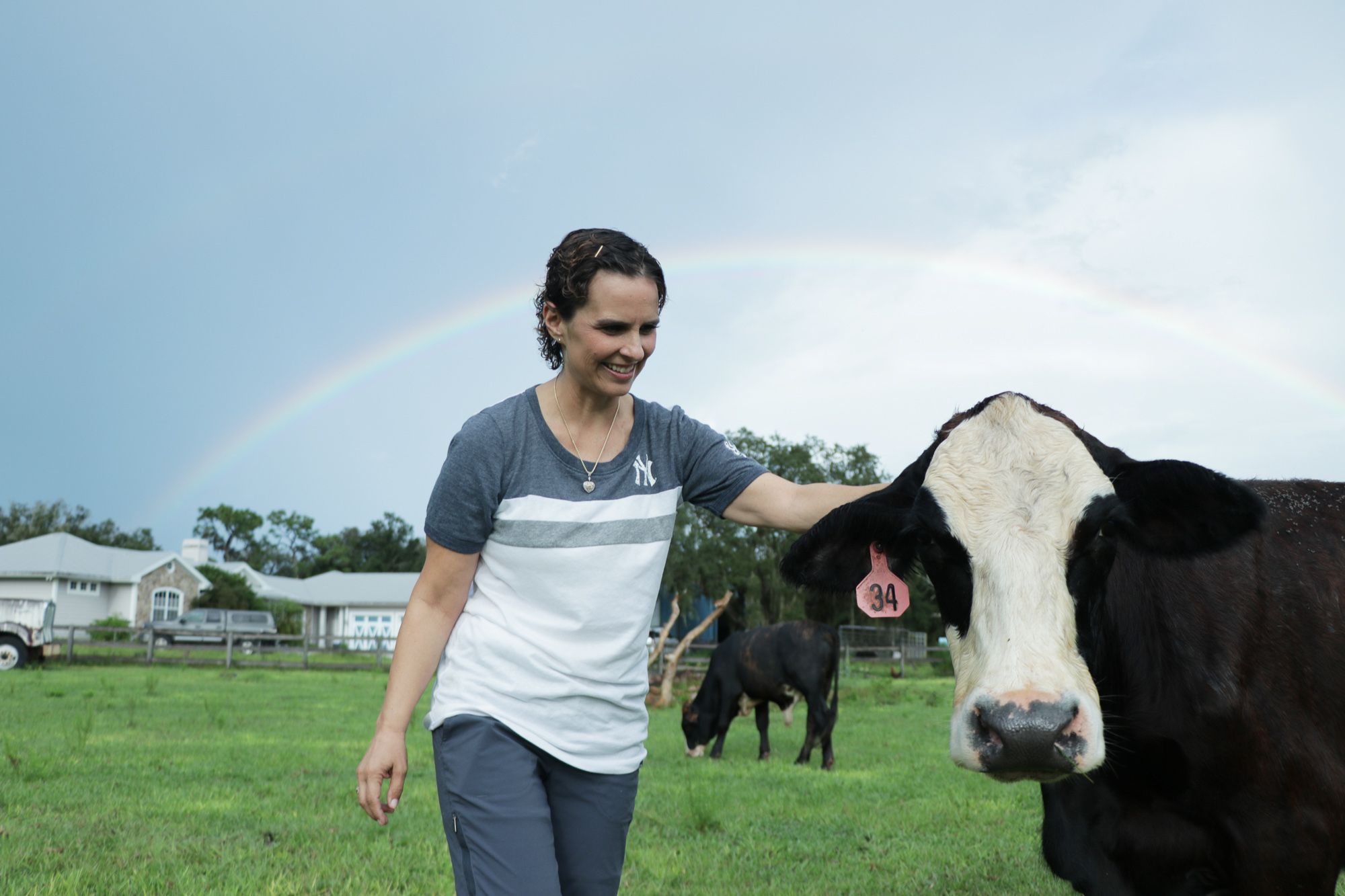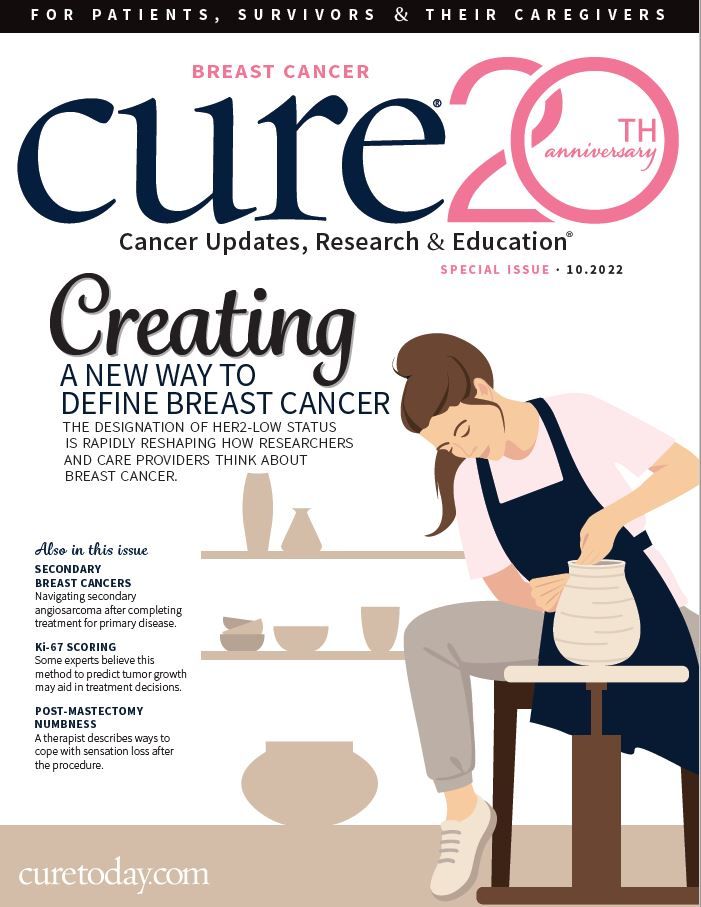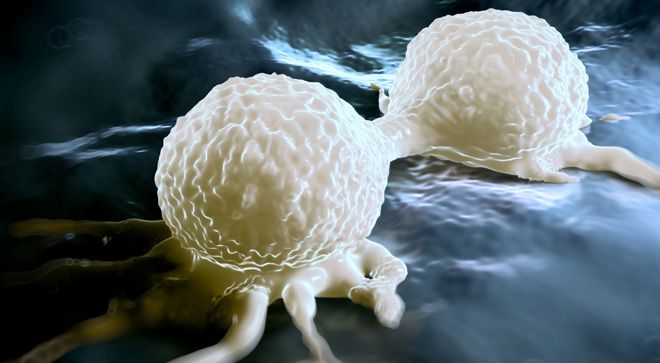Publication
Article
New Way To Define Breast Cancer Opens Doors to Treat Previously-Missed Subtype of Patients
Author(s):
The designation of HER2-low status is rapidly reshaping how researchers and care providers not only think about, but also treat, breast cancer.
In February 2014, Tiffany O’Donnell, then 33, felt an odd pain in her right breast.
The discovery was enough to send her to a doctor, who referred her for a mammogram. The mammogram led to a biopsy, at which point she received life-changing news.
“I had the biopsy done on a Friday,” says O’Donnell. “That Monday, I got a phone call to come into the office because it was breast cancer.”
Tiffany O'Donnell began receiving treatment with Enhertu after doctors found new lesions on her liver in July 2022. Her breast cancer was reclassified as HER2 low because of a change in the biomarkers of her tumors.

Although the mass in her right breast was benign, she had stage 2B cancer in her left breast.
“I went into a little bit of shock,” O’Donnell remembers. “I think it took a while for it to really sink in.”
O’Donnell recalls those early days after her diagnosis as “a whirlwind.”
She remembers meeting doctors and scheduling an operation, but in general, she says, the period was a blur. Along with her husband, O’Donnell brought her father with her to medical appointments. He helped keep track of what her care team told her about her illness and treatment and was able to ask questions that O’Donnell, overwhelmed by an avalanche of information, might not have thought to mention on her own.
After she underwent a double mastectomy with reconstructive surgery and chemotherapy, it looked as though O’Donnell’s condition was stable. But in 2019, after speaking to doctors about back pain that wouldn’t go away, she learned that the cancer had metastasized to her bones. In the years that followed, she also developed metastases on her liver and brain.
The HER2 status (or receptor status) of the cancer was different now as well. The initial disease had been classified as human epidermal growth factor receptor 2 (HER2) negative, meaning the cancer did not express abnormal levels of HER2, a protein involved in cell growth that is sometimes found to be overexpressed in breast cancer. This time, however, the disease fell into a category called HER2 low.
The designation of HER2-low status is rapidly reshaping how researchers and care providers think about breast cancer. As many as four out of five instances are considered HER2 negative, according to the National Cancer Institute, meaning the cells in the tumor do not express overly high levels of the HER2 protein. But in truth, many cancers that have been called HER2 negative might be more accurately characterized as HER2 low, meaning they produce only small amounts of this protein.
Although having marginal levels of HER2 expression is common in breast cancers (the National Cancer Institute estimates that anywhere from 50% to 60% of breast cancers can be considered HER2 low), it wasn’t until very recently that doctors were able to exploit this trait to treat the disease.
Breast Cancer Subtypes
Understanding why HER2-low status represents a breakthrough requires a quick lesson in breast cancer subtypes. Historically, doctors have used three major markers to distinguish between breast cancers: two to describe those expressing receptors for the hormones estrogen and progesterone and another to describe those expressing unusually high levels of the protein HER2.
“If the tumor expresses hormone receptors, we call that breast cancer ‘hormone-receptor positive’ breast cancer. If HER2 is overexpressed on the tumor, we call the cancer ‘HER2-positive breast cancer.’ If none of these three (estrogen receptors, progesterone receptors or HER2) are expressed, then we call those breast cancers ‘triple-negative breast cancer,’” explains Dr. Heather Han, director of research in the department of breast oncology at Moffitt Cancer Center in Tampa, Florida.
When Janie Branscomb first learned that she had HER2-low breast cancer in 2017, there wasn't much that could be done for her disease. However, with the recent FDA approval of Enhertu for HER2-low breast cancer, Branscomb has a new option.

“We have these groups because we target these markers to tailor specific treatments for patients,” Han continues. “So far, we were able to identify effective treatments targeting hormone receptors and HER2-targeted therapy for HER2-positive breast cancer. Once HER2 was identified as a marker many decades ago, we knew some tumors had some expression of HER2, but not at high enough levels for us to call it overexpressed. HER2-targeted therapy worked the best for only HER2 overexpressed tumors.”
The first and still commonly used anti-HER2 antibody, Herceptin (trastuzumab), only is effective for truly HER2-positive but not HER2-low tumors. This was proven in a large clinical trial.
The problem with these HER2-low cancers was that even though oncologists knew about them, there was no way to use the biomarker to inform treatment for this subset of patients with cancer. This was the case for Janie Branscomb, a patient of Han’s from Myakka City, Florida. Unlike O’Donnell, Branscomb had metastatic disease when she was first diagnosed.
And her first doctor wasn’t much help.
“The doctor came in and she said, ‘There’s nothing we can do. You’re stage 4,’” Branscomb says.
The doctor estimated that she had three to five years to live.
“That’s when I was like, I’m not good with that. We’ve got to figure something else out,’” Branscomb says.
When she found out she had HER2-low cancer, there wasn’t much anyone could do with the information. Her breast biopsy was HER2 negative, but her metastases were HER2 low.
“I was diagnosed in 2017, so they really weren’t saying too much about HER2 low,” Branscomb recalls. “It was either negative or positive. There wasn’t really much of the in between.”
A New Standard of Care?
Historically, clinicians had to use chemotherapy on HER2-low breast cancer, which produced only limited success. But in the past few months, a new drug has offered a possible solution.
In August 2022, the Food and Drug Administration (FDA) approved Enhertu (fam-trastuzumab deruxtecan-nxki) for treating patients with metastatic HER2-low breast cancer. Laboratory studies suggested that HER2-low tumor growth could also be blocked with Enhertu, and it was subsequently confirmed in a small study of patients with HER2-low tumors. This led to a larger trial that led to the new approval and dramatically expanded the number of patients eligible to be treated with the medication.
The FDA based its approval on the DESTINY-Breast04 study, a randomized clinical trial that included more than 500 adults with HER2-low breast cancer that had either metastasized to other parts of their bodies or couldn’t be removed with surgery. Researchers randomly assigned the patients to two groups: one that was treated with a doctor’s choice of existing chemotherapies and another group, twice as large as the first, that was treated with Enhertu.
The results were dramatic enough that an article about the trial published by the American Society of Clinical Oncology called Enhertu “a new standard of care” for people with metastatic HER2-low breast cancer. Not only that, but the study’s principal investigator, Dr. Shanu Modi of Memorial Sloan Kettering Cancer Center in New York, received a standing ovation after she gave a presentation of her team’s findings — an uncommon occurrence at these meetings.
Risk of dying or disease progression was cut in half for patients in the study assigned to intravenous infusions of Enhertu. Overall, patients assigned to Enhertu were 36% less likely to die than those assigned to conventional chemotherapy. Patients assigned to Enhertu lived for a median of 9.9 months before cancer progression compared with 5.1 months for the chemotherapy group, the researchers reported. In terms of overall survival, patients given Enhertu lived for a median of 23.4 months compared with 16.8 months for those given conventional chemotherapy.
Traditionally, most cancer treatments start out as an option only for patients with advanced disease. Once researchers can see the therapy in action, further studies will explore expanding the number of patients who can be treated with Enhertu.
“The ultimate goal is for the medicine to be studied in patients with high-risk early-stage (disease), so potentially we can cure more patients,” says Han.
How Enhertu Works
Enhertu is an antibody-drug conjugate, which means it belongs to a group of therapies that use the proteins expressed by cancer cells to deliver cancer-killing drugs right to the source. In the case of Enhertu, the medicine uses HER2 proteins as an actual target to attach to and enter cancer cells and kill them.
“It’s a chemotherapy drug that is attached to a HER2-targeted agent,” says Dr. Jane Lowe Meisel, an associate professor of hematology and medical oncology at Emory University School of Medicine in Atlanta. “It gets driven to the HER2-overexpressing cells by the targeting agent, and then the chemotherapy gets deployed into that cancer cell and can kill it off more selectively (than standard chemotherapy).”
An antibody is a protein made by the immune system that attacks foreign bodies, like viruses or bacteria.
HER2 proteins may not be necessarily driving the growth of these breast cancers, but they are a door through which medicine can infiltrate and destroy tumor cells. Dr. V.K. Gadi, a researcher and medical oncologist in the department of hematology and oncology at the University of Illinois Cancer Center in Chicago, describes the antibody-drug conjugate as a sort of guided missile.
“Unlike normal antibodies that your body generates because it’s seeing a virus or bacteria, trastuzumab was engineered in a laboratory,” Gadi explains, noting that this is a simplified explanation. “And instead of caring about bacteria or a virus, it was engineered to attack HER2. And once it found HER2, it invited an immune response to that area.”
But trastuzumab had only limited success when there were smaller amounts of the HER2 protein on the surface of the cell, Gadi adds. The same was true of many conventional chemotherapies: The substances designed to enter and destroy cancer cells didn’t work particularly well in the presence of low HER2 levels.
“(The researchers who created Enhertu) took that molecule trastuzumab, and now they’ve glued on a super-toxic chemotherapy to it,” says Gadi. “By putting the chemotherapy on that antibody, which works like a little guided missile, now that chemotherapy’s being delivered straight to the cancer cell.”
The chemotherapy, deruxtecan, is especially effective because it is chemically different from many chemotherapies used in breast cancer, says Gadi. Patients with advanced disease have already been heavily treated with conventional chemotherapy, so the disease is often resistant to many types of chemotherapy. Deruxtecan, on the other hand, is not as closely related to these therapies, which means the tumor is less likely to resist treatment.
Furthermore, experts say, Enhertu has what’s known as a “bystander effect,” in which the drug kills cancer cells neighboring those that were initially targeted.
“Not only did the missile kill the target, it killed the neighborhood around it as well,” Gadi says. “If you have enough of those things happening, you can impact the whole tumor.”
The result is a medicine that works for patients with both high and low levels of HER2 expression.
“We used to define patients as either HER2 positive or negative,” Meisel says. “The HER2-low category was really created by the investigators who came up with the idea for this study. This trial really brought that term to life.”
New Disease Classification Expands Patient Options
The study and subsequent FDA approval has prompted care providers, including Meisel, to review the disease characteristics of some of their patients.
“As I’ve had patients in my own clinic who’ve progressed, before making a choice about what to offer them next, I’ve actually gone back and said, ‘Were they really HER2 negative? Or were they HER2 low?,’” Meisel says. “And then I’d classify them in our clinic notes and be able to explain to them this new way that we are defining their cancer, and the options this might open up for them going forward.”
In some cases, the new classification has resulted in Meisel recommending Enhertu to her patients.
“That’s been an exciting thing to be able to offer,” she says.
The sheer number of patients who stand to benefit is also noteworthy.
“It could impact as many as half the patients living with stage 4 breast cancer,” says Meisel, adding that some studies are already examining the possibility of using Enhertu in earlier stages of breast cancer and that it could become common in treating high-risk, early-stage disease in the next several years. She describes the rise of antibody-drug conjugates in breast cancer as “a new paradigm.”
O’Donnell began Enhertu after doctors found new lesions on her liver in July 2022.
In O’Donnell’s case, it wasn’t the changing terminology that led to her newfound HER2-low status, but rather an actual change in the biomarkers of the tumors: Cancers can change their HER2 status during the course of treatment.
She’d discussed the possibility of trying Enhertu with her oncologist already, and because of her job as an administrator at the Penn State Health Breast Center in Hershey, Pennsylvania, O’Donnell was more informed about new breakthroughs in the field than other people might have been. She has already been through several lines of therapy, including multiple chemotherapies, and with two Enhertu treatments under her belt so far, she says the side effects are much less severe than with some conventional chemotherapy drugs she’s taken.
But it’s too soon to tell whether the drug has begun to work for her.
Both O’Donnell and Branscomb have each had more than half a dozen different treatments. Branscomb, who estimates that Enhertu is her seventh line of therapy, first began Enhertu late last winter. Since then, the tumors on her brain have shrunk out of existence, and her tumor markers have improved by almost half. Other tumors, though they have not gotten any smaller, have not gotten worse, either.
Patients should be aware, however, that Enhertu does come with side effects, some of which are serious. The most common side effects reported in the DESTINY-Breast04 trial were loss of appetite, nausea, constipation, vomiting, hair loss, diarrhea and musculoskeletal pain. The drug also comes with a boxed warning from the FDA.
This warning alerts patients to the possibility of interstitial lung disease, an illness connected to inflammation and the formation of scar tissue on the lungs, which occurred in some patients assigned to Enhertu in the DESTINY-Breast04 study (none of the patients assigned to conventional chemotherapy developed this disease). It can rarely be fatal in about 1% of patients. Furthermore, the FDA says patients who are pregnant should not take Enhertu.
O’Donnell has noticed, just as she did when she was on conventional chemotherapy, that she is losing hair again and is experiencing the same fatigue she experienced with other treatments.
“At first I was unsure because I didn’t want to go through chemotherapy again,” she says. “I think that’s what upset me most: the possibility of losing my hair again. But at the same time, it’s a step closer to (this cancer) being a chronic disease instead of a terminal disease. And another step closer to hopefully finding a cure. We’re getting there, little by little. It’s an exciting step forward.”
Branscomb, on the other hand, says her hair has begun to grow back since starting Enhertu, although she, like O’Donnell, also has fatigue. But it’s still a far cry from the alopecia, nausea, diarrhea and abdominal pain she experienced with standard chemotherapy.
Moving Forward With Life
O’Donnell has become involved in patient advocacy and made friends through survivor networks. At the time of her interview, she was preparing for a fundraising bike ride with friends from the survivor community. Those bonds have at times been bittersweet because she’s lost some of these friends to cancer.
“You can’t think about the future,” O’Donnell says of living with metastatic cancer. “You have to take it one day at a time. Live in the moment with your family and friends and try not to think about the worst-case scenario.”
Like O’Donnell, Branscomb is getting on with life. She runs her family’s small cattle ranch and continues to follow her favorite baseball team, the New York Yankees.
“I think it’s incredible,” Branscomb says of Enhertu. To those going through a similar ordeal, she says, “Don’t let cancer dictate your life. Keep going. Make memories.”
For more news on cancer updates, research and education, don’t forget to subscribe to CURE®’s newsletters here.
To learn more about Tiffany O'Donnell's journey with HER2-low breast cancer and what it was like to research Enhertu years before being prescribed the drug, listen to this "Cancer Horizons" podcast episode.





